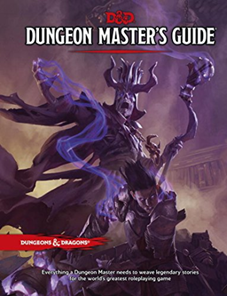 Last Friday, the participants of my D&D 5E Greyhawk game tried using a version of the variant D&D Initiative system that Mike Mearls described in a few short tweets.
Last Friday, the participants of my D&D 5E Greyhawk game tried using a version of the variant D&D Initiative system that Mike Mearls described in a few short tweets.
We ran into problems. But it was fascinating to see them in action.
The system, as I understood it, required the group to declare actions at the start of each round. Depending on those actions, they’d roll initiative dice (d4s, d6s, d8s and d12s for the most part and possibly multiples), and act only where their initiative was called out – with the DM starting at 1 and counting up. Thus, lower rolls meant going earlier in the round.
The system worked fine for basic actions – so when the characters were doing nothing more than standing toe-to-toe (or back from combat) and attacking or casting spells. Where things got messy was when the rogues and monks started using bonus actions and performing a lot of mobile movement.
As an example, Paul’s rogue ended up in melee combat with a gnoll. We do action declaration:
- Paul wishes to use a bonus action to disengage, then move away then shoot.
- The Gnoll wishes to strike Paul in melee.
Now, given the way this initiative system works, if Paul rolled well, he would move away, shoot – and the Gnoll would lose its action as Paul was no longer adjacent.
The idea of using an additional die for bonus actions caused more problems, especially for those bonus actions that are reactive in nature. It was a major reduction in the effectiveness of two-weapon fighting, the healing word spell and second wind. The usually fast rogues would most often go last, because of the bonus action disengage, dash or hide – which make up a major feature of the class’s abilities.
The mobile battlefield became very difficult to adjudicate. There are times you want to roll poorly – if both sides move towards each other and attack with melee weapons, then the one who rolls worse attacks, whilst the other does not. (Yes, this is a problem now as well, but at least you know what you’re doing and you can at least ready an action).
Against ranged combatants, it became more worthwhile to just move and not attack (thus just a d6 for initiative) rather than attack and increase the chances of reaching them after they shot you. Even more weirdness: I move up to the ranged character, who is moving back and shooting. The odds are that I win initiative and move adjacent, giving me an attack of opportunity as they move away… but if I were to move and attack, I wouldn’t get a chance to reach them before they moved out of range!
I definitely need to see the system written up in Unearthed Arcana or a similar column – too many questions at the moment!
ADDENDUM: Mike Mearls added the following on Twitter after reading this report:
One perhaps key thing – while you declare general type of action, you decide specifics on turn. IOW, pick move and attack, but choose destination and target on your turn.
However, in our game – where the battle was, in fact, quite scattered – it was the necessity of predeclaring the intent to move or not move that caused the trouble. Do you have to go later just in case someone might disengage and you need to follow them?

I tried this with some fairly new players yesterday. Wasn’t perfect, had a lot of “now what?” Moments where planned actions had to change. Maybe it was being too soft with the rules but where plans needed to change dramatically, I allowed them to do basically what was permitted in their normal turns even if they didn’t entirely plot it all out.
Pro: it seemed like it forced some planning and consideration, and everyone seemed more engaged in combat.
Con: it does raise a lot of questions, and the PCs like the rogue who should be moving pretty early on got stuck later in the turn (bonus, move, attack: d4, d6, d8… sometimes she got lucky with a 5 but usually it was 11 or 12).
We’re going to try one combat with standard initiative order and one with this modified system next session, and see how we all like both.
It looks more like programmed movement – with all the attendant problems of guesswork and lack of reactivity to changing battlefield – than an initiative system.